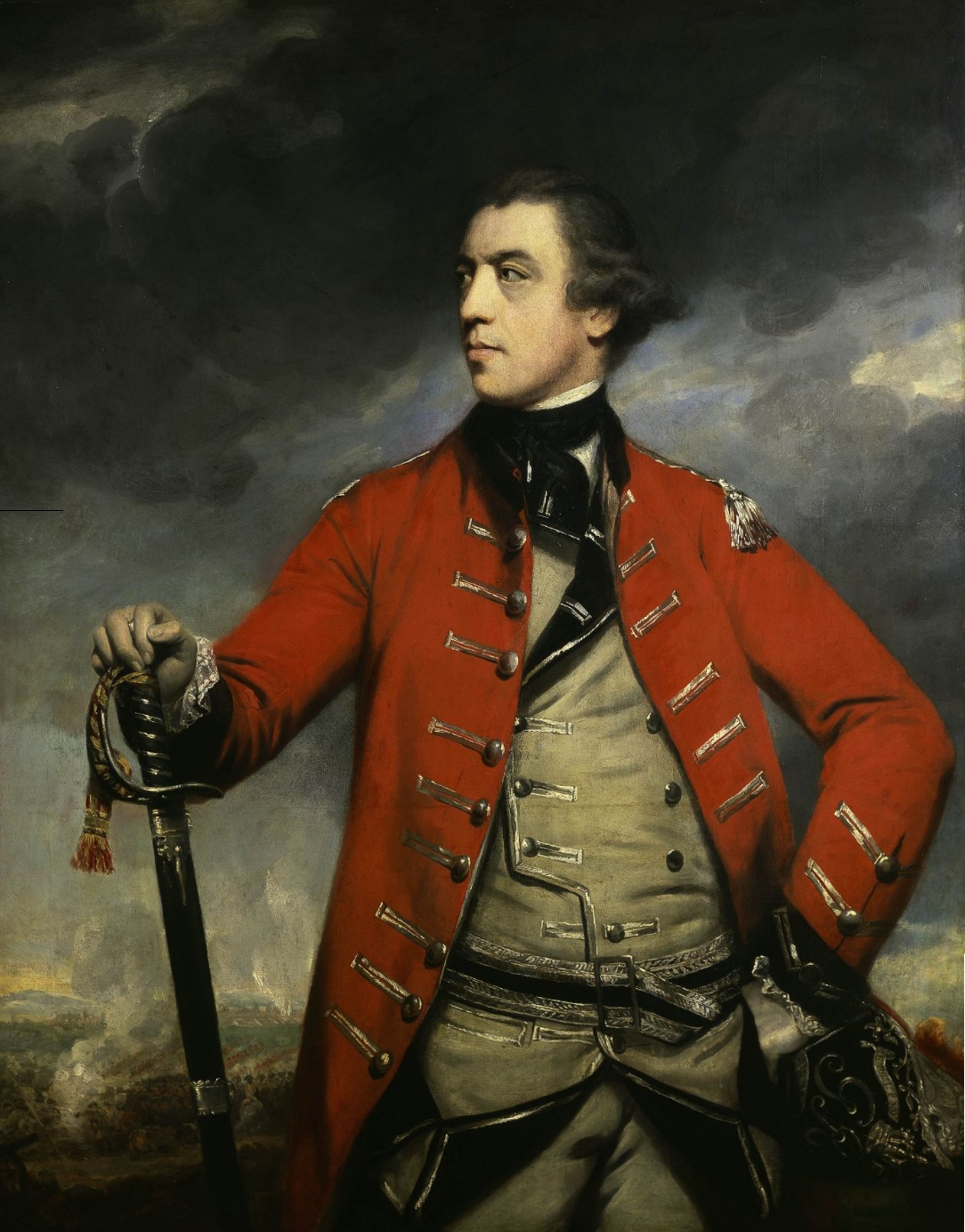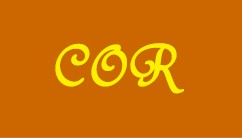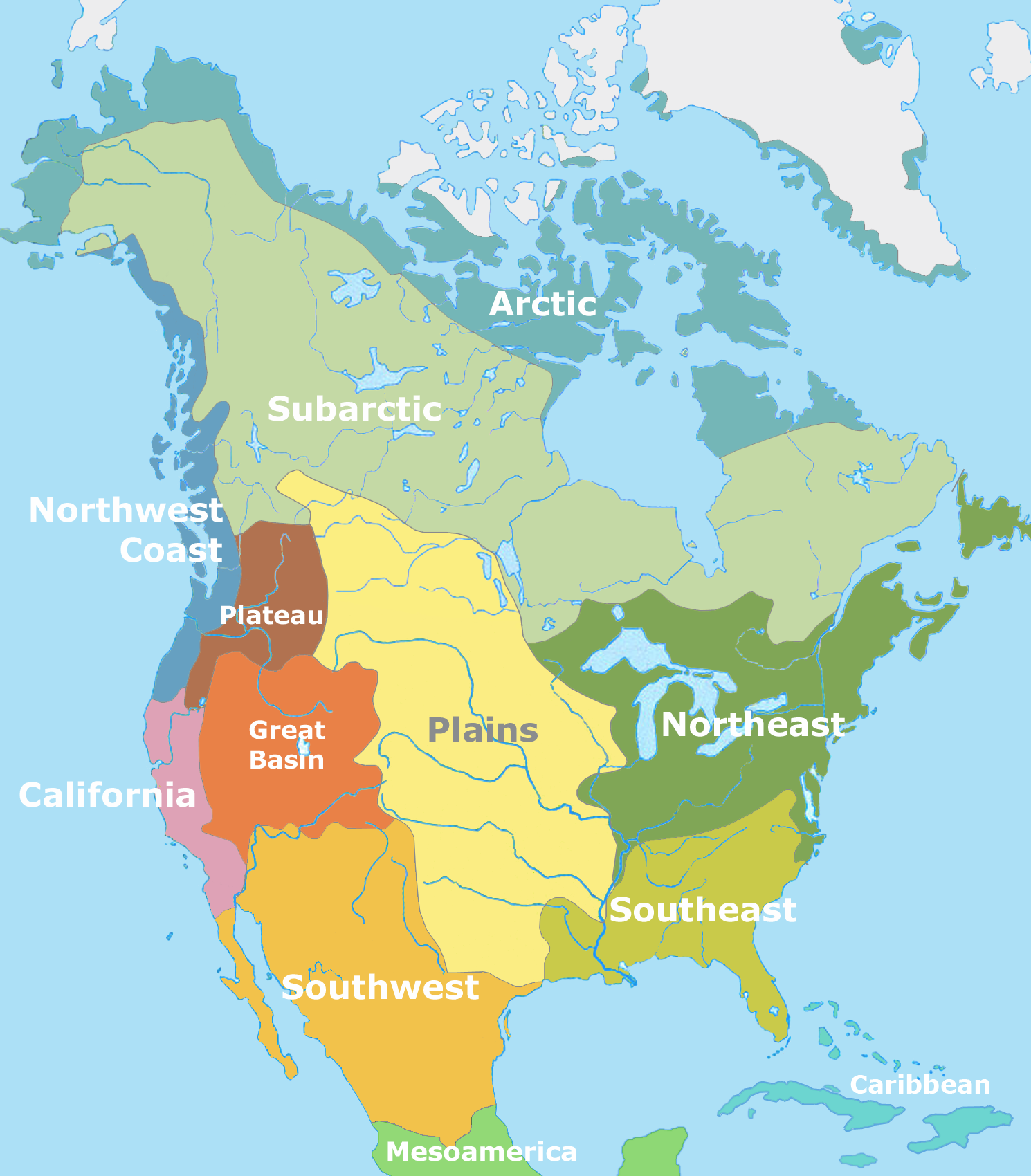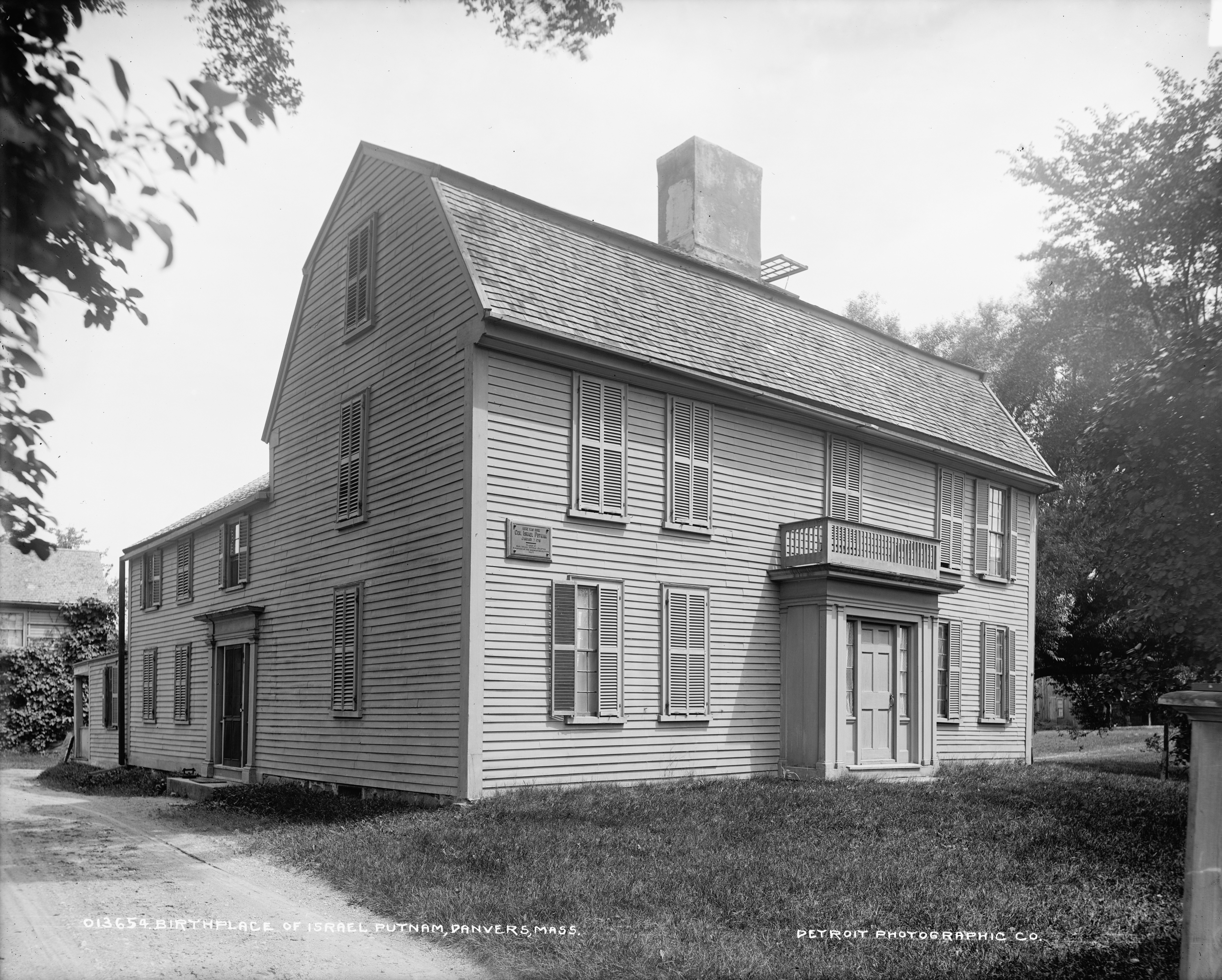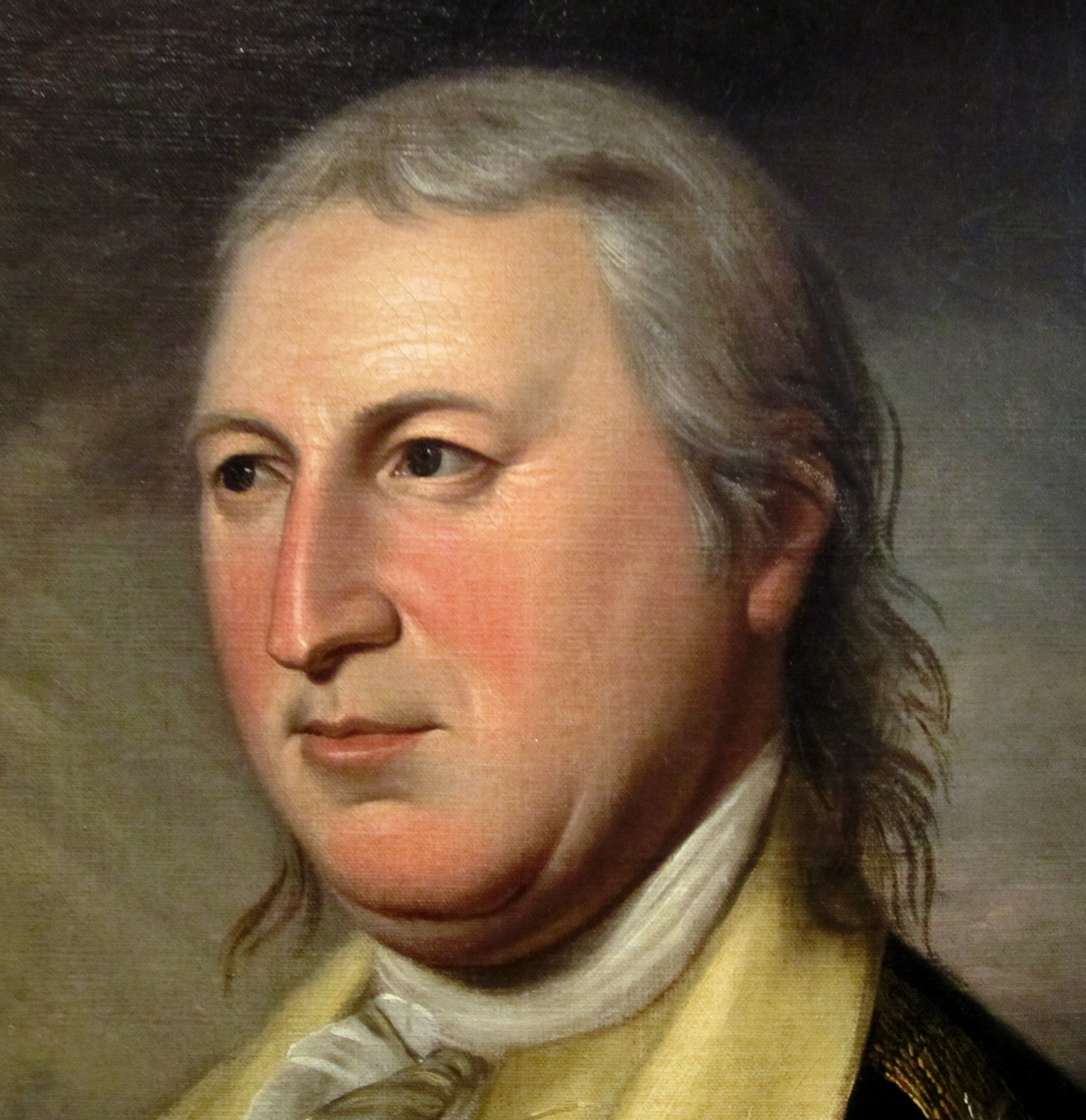|
Saratoga Campaign
The Saratoga campaign in 1777 was an attempt by the British to gain military control of the strategically important Hudson River valley during the American Revolutionary War. It ended in the surrender of a British army, which historian Edmund Morgan argues, "was a great turning point of the war, because it won for Americans the foreign assistance which was the last element needed for victory." The primary thrust of the campaign was planned and initiated by Lieutenant General John Burgoyne. Commanding a main force of some 8,000 men, he moved south in June from Quebec, boated south on Lake Champlain to Fort Ticonderoga and from there boated south on Lake George, then marched down the Hudson Valley to Saratoga. He initially skirmished there with the Patriot defenders with mixed results. The turning point of the campaign happened in August at the Battle of Bennington when militia forces from Vermont, New Hampshire, and Massachusetts defeated, killed, and captured around 1,000 Br ... [...More Info...] [...Related Items...] OR: [Wikipedia] [Google] [Baidu] |
American Revolutionary War
The American Revolutionary War (April 19, 1775 – September 3, 1783), also known as the Revolutionary War or American War of Independence, was the armed conflict that comprised the final eight years of the broader American Revolution, in which American Patriot (American Revolution), Patriot forces organized as the Continental Army and commanded by George Washington defeated the British Army during the American Revolutionary War, British Army. The conflict was fought in North America, the Caribbean, and the Atlantic Ocean. The war's outcome seemed uncertain for most of the war. However, Washington and the Continental Army's decisive victory in the Siege of Yorktown in 1781 led King George III and the Kingdom of Great Britain to negotiate an end to the war in the Treaty of Paris (1783), Treaty of Paris two years later, in 1783, in which the British monarchy acknowledged the independence of the Thirteen Colonies, leading to the establishment of the United States as an independent and ... [...More Info...] [...Related Items...] OR: [Wikipedia] [Google] [Baidu] |
Native Americans In The United States
Native Americans (also called American Indians, First Americans, or Indigenous Americans) are the Indigenous peoples of the Americas, Indigenous peoples of the United States, particularly of the Contiguous United States, lower 48 states and Alaska. They may also include any Americans whose origins lie in any of the indigenous peoples of North or South America. The United States Census Bureau publishes data about "American Indians and Alaska Natives", whom it defines as anyone "having origins in any of the original peoples of North and South America ... and who maintains tribal affiliation or community attachment". The census does not, however, enumerate "Native Americans" as such, noting that the latter term can encompass a broader set of groups, e.g. Native Hawaiians, which it tabulates separately. The European colonization of the Americas from 1492 resulted in a Population history of Indigenous peoples of the Americas, precipitous decline in the size of the Native American ... [...More Info...] [...Related Items...] OR: [Wikipedia] [Google] [Baidu] |
Israel Putnam
Israel Putnam (January 7, 1718 – May 29, 1790), popularly known as "Old Put", was an American military officer and landowner who fought with distinction at the Battle of Bunker Hill during the American Revolutionary War (1775–1783). He also served as an officer with Rogers' Rangers during the French and Indian War (1754–1763), when he was captured by Mohawk people, Mohawk warriors. He was saved from the ritual burning given to enemies by the intervention of French officer Molang, with whom the Mohawks were allied. Putnam's courage and fighting spirit became known far beyond his home of Connecticut's borders through the circulation of folk legends in the American colonies and states celebrating his exploits. Early life Putnam was born in 1718 in Salem Village, Massachusetts (now Danvers, Massachusetts, Danvers) to Joseph and Elizabeth (Porter) Putnam, a prosperous farming Putnam family. His parents had opposed the Salem witch trials in the 1690s. Putnam moved west in ... [...More Info...] [...Related Items...] OR: [Wikipedia] [Google] [Baidu] |
Benjamin Lincoln
Benjamin Lincoln (January 24, 1733 ( O.S. January 13, 1733) – May 9, 1810) was an American army officer. He served as a major general in the Continental Army during the American Revolutionary War. Lincoln was involved in three major surrenders during the war: his participation in the Battles of Saratoga (sustaining a wound shortly afterward) contributed to John Burgoyne's surrender of a British army, he oversaw the largest American surrender of the war at the 1780 siege of Charleston, and, as George Washington's second in command, he formally accepted the British surrender at Yorktown. Lincoln served from 1781 to 1783 as the first United States Secretary of War. While Secretary of War, Lincoln became an original member of The Society of the Cincinnati of the state of Massachusetts and was elected as the first president of the Massachusetts Society on June 9, 1783. After the war, Lincoln was active in politics in his native Massachusetts, running several times for lieu ... [...More Info...] [...Related Items...] OR: [Wikipedia] [Google] [Baidu] |
Benedict Arnold
Benedict Arnold (#Brandt, Brandt (1994), p. 4June 14, 1801) was an American-born British military officer who served during the American Revolutionary War. He fought with distinction for the American Continental Army and rose to the rank of major general before defecting to the British in 1780. General George Washington had given him his fullest trust and had placed him in command of West Point, New York, West Point in New York Colony, New York. Arnold was planning to surrender the fort to British forces, but the plot was discovered in September 1780, whereupon he fled to the British lines. In the later part of the war, Arnold was commissioned as a brigadier general in the British Army during the American Revolutionary War, British Army and placed in command of the American Legion (Great Britain), American Legion. He led British forces in battle against the army which he had once commanded, and his name became synonymous with treason and betrayal in the United States.#Rogets, ... [...More Info...] [...Related Items...] OR: [Wikipedia] [Google] [Baidu] |
Arthur St
Arthur is a masculine given name of uncertain etymology. Its popularity derives from it being the name of the legendary hero King Arthur. A common spelling variant used in many Slavic, Romance, and Germanic languages is Artur. In Spanish and Italian it is Arturo. Etymology The earliest attestation of the name Arthur is in the early 9th century Welsh-Latin text ''Historia Brittonum'', where it refers to a circa 5th century Romano-British general who fought against the invading Saxons, and who later gave rise to the famous King Arthur of medieval legend and literature. A possible earlier mention of the same man is to be found in the epic Welsh poem ''Y Gododdin'' by Aneirin, which some scholars assign to the late 6th century, though this is still a matter of debate and the poem only survives in a late 13th century manuscript entitled the Book of Aneirin. A 9th-century Breton people, Breton landowner named Arthur witnessed several charters collected in the ''Redon_Abbey#Cartulary_and ... [...More Info...] [...Related Items...] OR: [Wikipedia] [Google] [Baidu] |
Philip Schuyler
Philip John Schuyler (; November 20, 1733 - November 18, 1804) was an American general in the American Revolutionary War, Revolutionary War and a United States Senate, United States Senator from New York (state), New York. He is usually known as Philip Schuyler, while his son is usually known as Philip Jeremiah Schuyler, Philip J. Schuyler. Born in Albany, New York, Albany, Province of New York, into the prosperous Schuyler family, Schuyler fought in the French and Indian War. He won election to the New York General Assembly in 1768 and to the Continental Congress in 1775. He planned the Continental Army's 1775 Invasion of Quebec (1775), Invasion of Quebec, but poor health forced him to delegate command of the invasion to Richard Montgomery. He prepared the Continental Army's defense of the 1777 Saratoga campaign, but was replaced by Major General Horatio Gates as the commander of Continental forces in the theater. Schuyler resigned from the Continental Army in 1779. Schuyler se ... [...More Info...] [...Related Items...] OR: [Wikipedia] [Google] [Baidu] |
Horatio Gates
Horatio Lloyd Gates (July 26, 1727April 10, 1806) was a British-born American army officer who served as a general in the Continental Army during the early years of the American Revolutionary War, Revolutionary War. He took credit for the American victory in the Battles of Saratoga (1777) – a matter of contemporary and historical controversy – and was blamed for the defeat at the Battle of Camden in 1780. Gates has been described as "one of the Revolution's most controversial military figures" because of his role in the Conway Cabal, which attempted to discredit and replace General George Washington; the battle at Saratoga; and his actions during and after his defeat at Camden.Billias, p. 80 Born in the town of Maldon, Essex, Maldon in Essex, Gates served in the British Army during the War of the Austrian Succession and the French and Indian War. Frustrated by his inability to advance in the army, Gates Purchase of commissions in the British Army, sold his commission and est ... [...More Info...] [...Related Items...] OR: [Wikipedia] [Google] [Baidu] |
Nipissing First Nation
Nipissing First Nation (), meaning , is a long-standing community of Nishnaabeg peoples, who traditionally speak Anishinaabemwin, located along the shorelines of Lake Nipissing in northern Ontario. They are referred to by many names in European historical records, since the colonists often adopted names given to them by other nations. The Nbisiing Anishinaabeg have roots in both the Ojibwe and Algonquin nations, making up part of the wider grouping of Anishinaabe peoples. Their heritage is a result of the fact that the Nipissing homeland sits at a geographical crossroads, existing between the traditional territories of the Ojibwe around the Great Lakes and the Algonquin country covering much of the Kitchi-sipi watershed. Geography Lake Nipissing drains via the French River into Georgian Bay and, to the east of Lake Nipissing, Trout Lake drains via the Mattawa River into the Ottawa River. Living at the crossroads between two watersheds, the Nipissing were key to trade t ... [...More Info...] [...Related Items...] OR: [Wikipedia] [Google] [Baidu] |
Wyandot People
The Wyandot people (also Wyandotte, Wendat, Waⁿdát, or Huron) are an Indigenous people of the Northeastern Woodlands of the present-day United States and Canada. Their Wyandot language belongs to the Iroquoian languages, Iroquoian language family. In Canada, the Huron-Wendat Nation has two First Nations in Canada, First Nations Indian reserve, reserves at Wendake, Quebec. In the United States, the Wyandotte Nation is a federally recognized tribe headquartered in Wyandotte, Oklahoma. There are also List of organizations that self-identify as Native American tribes, organizations that self-identify as Wyandot. The Wendat emerged as a confederacy of five nations in the St. Lawrence River Valley, especially in Southern Ontario, including the north shore of Lake Ontario. Their original homeland extended to the Georgian Bay of Lake Huron and Lake Simcoe in Ontario, Canada and occupied territory around the western part of the lake. The Wyandotte Nation (the U.S. Tribe) descends f ... [...More Info...] [...Related Items...] OR: [Wikipedia] [Google] [Baidu] |
Ojibwe
The Ojibwe (; Ojibwe writing systems#Ojibwe syllabics, syll.: ᐅᒋᐺ; plural: ''Ojibweg'' ᐅᒋᐺᒃ) are an Anishinaabe people whose homeland (''Ojibwewaki'' ᐅᒋᐺᐘᑭ) covers much of the Great Lakes region and the Great Plains, northern plains, extending into the subarctic and throughout the northeastern woodlands. The Ojibwe, being Indigenous peoples of the Northeastern Woodlands and of Indigenous peoples of the Subarctic, the subarctic, are known by several names, including Ojibway or Chippewa. As a large ethnic group, several distinct nations also consider themselves Ojibwe, including the Saulteaux, Nipissings, and Oji-Cree. According to the U.S. census, Ojibwe people are one of the largest tribal populations among Native Americans in the United States, Native American peoples in the U.S. In Canada, they are the second-largest First Nations in Canada, First Nations population, surpassed only by the Cree. They are one of the most numerous Indigenous peoples of t ... [...More Info...] [...Related Items...] OR: [Wikipedia] [Google] [Baidu] |
